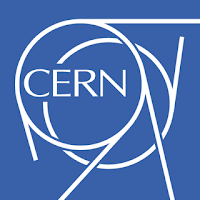CERN - European Organization for Nuclear Research logo.
May 1, 2023
30 April 2023 marks 30 years since the release of the World Wide Web software to the public
Image above: The original internal document that marked the release of the World Wide Web to the public, signed by Walter Hoogland and Helmut Weber.
Exactly 30 years ago, on 30 April 1993, CERN made an important announcement. Walter Hoogland and Helmut Weber, respectively the Director of Research and Director of Administration at the time, decided to publicly release the tool that Tim Berners-Lee had first proposed in 1989 to allow scientists and institutes working on CERN data all over the globe to share information accurately and quickly. Little did they know how much it would change the world.
On this day in 1993, CERN released the World Wide Web to the public. Now, it is an integral feature of our daily lives: according to the International Telecommunications Union, more than 5 billion people, two thirds of the worldwide population, rely on the internet regularly for research, industry, communications and entertainment.
“Most people would agree that the public release was the best thing we could have done, and that it was the source of the success of the World Wide Web,” says Walter Hoogland, co-signatory of the document that proclaimed the Web’s release, “apart from, of course, the World Wide Web itself!”
Public domain: then and now
The release of the World Wide Web was launched by an internal document, addressed “to whom it may concern” and signed by Hoogland and Weber. Back In 1993, copyright licensing standards were in the very first stages of development. In this first release, the document states that “CERN relinquishes all intellectual property rights to this code, both source and binary form, and permission is granted for anyone to use, duplicate, modify and redistribute it.”
However, as the open source concept was further developed, in 1994, the next version of the software was released under an open source licence, as opposed to a public domain release. This meant that CERN still retained the copyright, but anybody who wished to could use and modify the Web freely. You can read more about the licensing of the Web at this link: https://home.web.cern.ch/science/computing/birth-web/licensing-web
Releasing the World Wide Web to the public has arguably allowed it to grow into the giant it is today. Making it free and accessible to everyone was a move reflecting CERN’s core values of open collaboration for the benefit of society. This is now encapsulated in CERN’s Open Science Policy, which perpetuates the culture of openness and sharing at the Laboratory.
Watch the full interview with Walter Hoogland, co-signatory of the document, below.
You can read more about the birth of the Web at CERN here:
or on the dedicated Web@30 website:
https://web30.web.cern.ch/web-history.html
You can browse the very first website here:
https://home.cern/science/computing/birth-web
Note:
CERN, the European Organization for Nuclear Research, is one of the world’s largest and most respected centres for scientific research. Its business is fundamental physics, finding out what the Universe is made of and how it works. At CERN, the world’s largest and most complex scientific instruments are used to study the basic constituents of matter — the fundamental particles. By studying what happens when these particles collide, physicists learn about the laws of Nature.
The instruments used at CERN are particle accelerators and detectors. Accelerators boost beams of particles to high energies before they are made to collide with each other or with stationary targets. Detectors observe and record the results of these collisions.
Founded in 1954, the CERN Laboratory sits astride the Franco–Swiss border near Geneva. It was one of Europe’s first joint ventures and now has 23 Member States.
Related link:
International Telecommunications Union (ITU):
https://www.itu.int/en/ITU-D/Statistics/Pages/stat/default.aspx
For more information about European Organization for Nuclear Research (CERN), Visit: https://home.cern/
Image (mentioned), Video (NASA), Text, Credits: CERN/By Naomi Dinmore.


